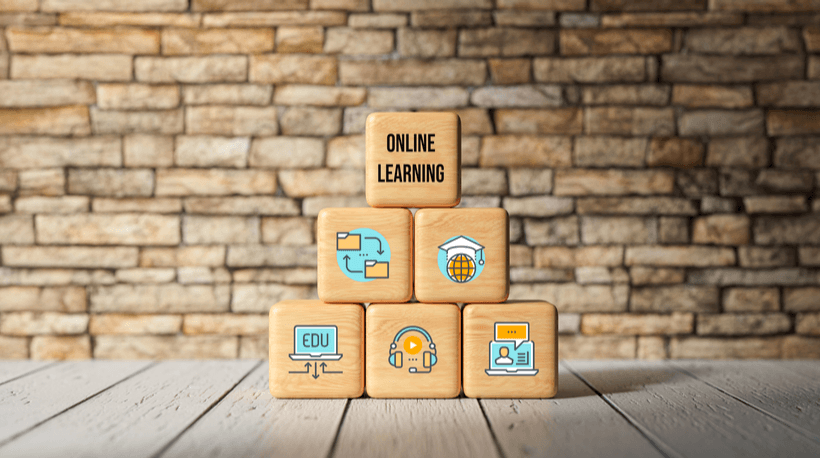
Why Develop Unique eLearning Modules?
Learner needs and curriculum limitations
You are very aware of the needs of your learners, yet there is only so much curriculum time available to teach or coach them. Teach less, learn more. Spend more time with feedback and spatial practice – this is how learners learn.
Many trainers would agree that we understand learners’ needs while still being aware of the limitations in terms of time, resources, and energy. I teach communication skills in my institution and in order to address the above issues we have started to develop original eLearning modules. In this article, the term e-module is used instead of e-resources as each module consists of several topics and types of e-resources. The e-modules developed by my department include English Quest (a grammar application), meeting management, interpersonal skills, professional and professional development, business email writing, and technical writing. These e-modules are made available to the learners in the Learning Management System for the entire duration of the learner’s candidacy in the facility. This allows learners to access the e-modules according to their needs before or after completing the required module for creditworthy communication skills.
Why should you develop original eLearning modules?
There are a variety of e-resources available for communication skills. We could include these e-resources in our classroom materials and use them right away, or we could filter them and bundle them into a package with clear learning outcomes in mind. As subject matter experts (SMEs) who know and understand the needs of our learners in the context in which they will be working in the workplace, my department has decided to create bespoke e-modules that can meet these needs. Training in communication skills requires a lot of feedback and practice, a luxury that curriculum time rarely allows. If students could go through the E-module, which includes simple activities before class, more time could be spent giving feedback to students as they do more complex activities in class (mixed approach). In addition, standalone e-resources can easily be reused and repackaged to meet changing needs for different groups of students. This causes one-time development costs and there are no copyright problems to be resolved.
I would like to share some of the lessons learned from developing these original eLearning modules as a subject matter expert in communication skills and project manager for these e-modules.
Development tips
1. Bring the workplace into the curriculum early on
The relevance of the content in the E-module for the task to be performed in the workplace is a main motive for the learning of the learner. A collaboration between a company expert and a trainer who knows the needs of the learners firsthand would be ideal. Informal chats about the general skill gaps in the workplace in a particular industry could draw attention to key areas that should be the focus of the eLearning module. When a business expert is not available, a good starting point for writing eLearning modules is to make a list of frequently asked questions about the topic and think about how to answer those questions in a clear and memorable way. Remember, eLearning resources are not meant to be comprehensive as a textbook. They are designed to meet the immediate needs of the learner.
2. Assign the learning outcomes
Map the learning outcomes for each topic in the eLearning module before going into each topic. Clear learning outcomes must be given for each topic to keep it focused. The learning outcomes for all subjects could then be summarized into a single act to help learners connect the dots from one subject to another. Regardless of whether learners are free to choose the topic to be covered or are forced to complete the topics in an orderly order, the act makes the learning journey explicit for the learners. The decision as to whether the learners have to cover all topics of the eLearning module or how they want must be made early on. A reward system within the eLearning module (e.g. unlocking a toolbox with resources or a badge), a tiered task, or a job requirement could be considered to motivate learners to continue their learning journey.
3. Divide the resources
E-learning learners have short attention spans. Each topic needs to be written in bite-sized pieces rather than narrative like an article. A variation in taste in each piece could keep learning interesting. For example, in a module for writing business email, there might be a topic on writing email trackers. The first section in this topic could focus on writing emails to check for work updates using an animated video with breaks for activities like MCQs and puzzles (approximately four minutes long). The second section could focus on writing diplomatic emails to bosses using a simple animation with graphics (approximately four minutes long). The third section could focus on tips to ensure that the email is written in the correct tone and executed with purely animated video (about a minute long).
4. Insist on storyboards
Manuscripts (written scripts for each topic) need to be developed into e-resources. The first stage in this development is the storyboard (a series of drawings of what the software version of the content in the manuscript will look like). Insist on getting storyboards from developers to resolve any perceptual differences (color scheme, character drawings, etc.) regarding the appearance of each e-resource being delivered. Clear communication between developers and SMEs in this early development phase is important, as changes in subsequent development phases take more time. This is because more components need to be unpacked and repackaged for affected revisions to be affected.
5. Test early and continuously
Once the storyboard has been approved for the first topic, a prototype could be developed and tested on the platform that the E-Module will be hosted on (the storyboarding process for the rest of the topics will continue). The prototype is usually tested by software developers to verify the functionality of the prototype. However, SMEs could offer perspectives that go beyond the functions and address issues of data reporting and feedback. For example, there may be practice activities and graded activities on a single topic. The SME wants to capture the results of the learners in practice and in graded activities. However, a single SCORM object can only be assigned to one grade element. If several tiered activities are to be recorded, several SCORM objects must be created. A decision must then be made on how to resolve the mismatch. The tested and approved prototype for the first topic could then serve as a template for the rest of the topics.
6. Operational problems after the rollout need to be considered
Each E module was originally introduced at a rate of one E module per year for learners at separate course locations (this is time consuming). However, with the introduction of further e-modules it was very difficult to keep an eye on the enrollment of the learners. Learners also had to visit different course locations to complete different tasks, which made the registration process cumbersome. It was therefore decided to combine all e-modules in one course location in the learning management system. This turned out to be sensible and logical.
The development of stand-alone original e-modules has helped create a core set of e-resources that are reusable for various purposes. Future use of other readily available e-resources to complement these core resources is welcomed.



